Planning Inspiration?
My seed orders are done. We will not discuss how much money I spent! Anything I missed either won't happen or will have to come off the seed rack.
BUT, now I'm trying to decide what I'm growing where and I'm feeling overwhelmed. I have a map with generalized crops. I know there's not enough room. I realized today there are no hybrid tomatoes on my list, so I either knock some off my list or find room. I need to figure out what to start first.
So tell me your plans. How do you organize? INSPIRE ME, please.
Comments (50)
Okiedawn OK Zone 7
7 years agoI simply plan by trying my best to rotate everything to different beds from last year. Because I grow so many nightshade family plants, that can get tricky. I don't plan on paper. I just walk out to the garden in mid-February with onion plants in my hand, choose a raised bed where onions were not grown last year and start planting. Potatoes have been an exception as I normally only grow them in the 3 raised beds with hardware cloth lining to keep out voles. This year, though, I am going to move the potatoes into a regular bed simply for the sake of soil health/crop rotation. I'm hoping the voles won't notice. Then I'll grow non-nightshades in the usual potato beds, so probably carrots, beets, turnips, lettuce, bush beans, and maybe southern peas and okra. Basically for this year, tomatoes will move to where cucumbers, beans and peas were grown last year simply because those are beds that didn't have tomatoes in them last year. The cucumbers, melons and squash likely will move to the back garden to grow with two plantins of corn, and so will some of the tomato plants. Herbs and flowers that are not perennial get tucked in among everything else. The southeast corner bed always has flowers for pollinators. Pepper plants probably will go to bed where I had melons and flowers last year. I don't like overthinking it. I just like to move things to a new spot so that any diseases or pests that might overwinter and that might be specific to a certain type of plant won't be able to easily find those plants.
When I start running out of space, I shift vining plants to fencelines even if that wasn't part of the original plan. I always start running out of space because I plant too much.
stockergal
7 years agoI am like Dawn, I just walk out to the garden and start planting. In Oklahoma you really can't plan. I run out of space every year. My solution is to make more beds, some are raised some are not. I just wing it. Ha ha
Related Discussions
Crop Cover for caterpillars
Q
Comments (2)Ive done some of the same reading and have decided to continue using BT on my cabbage and brassicas. I buy a liquid form that is diluted and sprayed. I dont spray the whole garden, just the possible problem plants with a plant mister type bottle. Yes, I know it could kill butterflies that decide to nest on those plants, but it does such a good job of taking care of cabbage lopers that I can live with it. I have many flowering plants that are supposed to attract butterflies, and hope that that will lure them away from the cabbage and Brussels Sprouts. If you want to begin a discussion on this question, you might want to post on the organic gardening forum - it is much more active....See MoreNeed Help With Kitchen Layout & Appliances! :)
Q
Comments (8)Read the new to kitchens thread posted by buehl. Amount many others things it will tell you how to post mulitiple photos in one post....See MoreCopper backsplash in a Craftsmen inspired kitchen?
Q
Comments (3)I think that would be wonderful with Craftsman-inspired kitchen style. Another idea might be to use copper tiles as design accents along with other Craftsman-style tiles. Either way, copper accents go very well with that general idea....See Morebeginning stages of landscape planning
Q
Comments (6)Gardengal already explained that a "landscapER" may not necessarily be competent in design. If they are, they're not going to hand over a plan at an initial visit, as that is something you would agree to pay for. Or it would be provided as part of an installation cost. I'm sure you could find a landscape designer who would provide design services for a fee, as they are everywhere. Or, you can do the design yourself if you have the proclivity and willingness to do the work (like any DIY job.) Not including the dreaming and wishing part, it would begin with drawing a measured-to-scale PLAN (overhead view looking down) of the area to be landscaped. If you have a question about what that is, Google "landscape plan images" and see dozens of examples. Of course, you would only need a simple black and white line drawing on paper, not a colored rendering, since you are not creating a plan for the purpose of selling or convincing anyone else. (Don't be put off by the elaborate art work of others.) If you think you'd like to try doing the design yourself, I suggest you create a base plan and post it here. It would show the existing features: lot lines, house footprint, patio, drive, walks, shed, trees ... all of the major features that exist now. Then explain all those things that you're interested in including in the yard ... changes and additions ... what you're trying to accomplish. You'll mention things you're presently not happy with. The yard looks narrow and unusually long. Why is it divided in half by the fence? The house is distant in the second picture, but it looks like people never use the back yard or patio (if there is one) for lounging. There's no beautification at all at the back of the house. If you intend to change this, you'd need a closer up picture so we could see what's there. The next step in the design process is analyzing what's there with the thought of keeping what's good and changing what's bad ... fixing the problems. In order to actually accomplish the work it will take money or a combination of it and sweat equity, if this is DIY. Be realistic about the resources that you can commit to the project over a the period of time you wish to work on it. There's no point in designing anything that's unaffordable. There IS a point to designing something that's unaffordable this year, but affordable in the next few years....See MoreKate OK USA (7b)
7 years agoI garden in a few raised beds. I try to rotate and/or I try to dump in some fresh soil/compost to amend if I can't properly rotate. I never have enough space for my big dreams. Lately, I've been less interested in trying new things and more interested in making space for the things I KNOW I will want to pick daily (tomatoes, herbs, green beans) and unique things (shallots, saffron, etc.) If I can easily buy it at the farmer's market, I am less likely to plant it in my small space - I can buy or be gifted all of the zucchini I could want, same for okra, so I tend not to plant it.
I sketch out possible ideas in a notebook for what goes where. Usually that changes when I'm out there with my hands in the dirt, but then I do try to document on paper what ends up where. It's not to scale and it's not perfect, but I try to keep a record. Can be fun/useful to look back at previous years plans/executions. I've been trying to adopt some parts of Dawn's "stick some here or there" attitude about some plants. We'll see how this year goes! I love the idea of wandering with a handful of onions!
luvncannin
7 years agoI plan on paper adjust in the field just like Kate. I have an area I reserve for whatever however but my main garden is set up pretty easy. Just start with the things you must have and work your way to the if I have room stuff.
hazelinok
7 years agoNormally I don't have a plan. I'm going to try to plan a bit more this year. My garden is a work in progress. There's a large spot that was tilled 2 years ago and on that spot are various shapes and sizes of raised beds...and a large empty spot that's at ground level where a giant load of compost sat. In the future this large "tilled" up space will be all raised beds--there's still tons of empty space.
Two of the beds are asparagus. This is their second year.
One round, 3-tiered bed has strawberries--also second year.
My herbs are in another bed, but I'm not sure they'll survive this winter--may have to replant.
And I have a wine bottle bed in the middle of the garden where the Echinacea lives
There's also 3 raised beds in the back, away from the main east garden. Last year, it was tomatoes and peppers. I will move all of the tomatoes and peppers to the east garden this year. I'll put some early peas in the back garden and then plant the types of squash that SVBs ruin in those beds once the peas are done (once it's too hot). When the SVBs ruin those plants, I'll put something else there. Not sure what, though. It will depend on how long they live.
The east garden is a challenge for me this year. I want to plant the Korean squash, the tomatoes, peppers, cucumbers, beans, potatoes, watermelon, carrots, eggplant, radishes, cabbage, Seminole pumpkins, broccoli, and southern peas in the larger garden. Wondering if I have enough beds. I've chosen the smaller watermelon and eggplant this year. The onions are going back in their same spot this year--I'll move them next year. After the onions are out, the Seminoles will go in. Aside from that, I'm not where I'll plant the other stuff.
I want to pay attention to when I plant things (make notes) and mark what I've planted, because I forget.
AmyinOwasso/zone 6b
Original Author7 years agolast modified: 7 years agoAt this point I am updating spreadsheets. Spreadsheets are how I wrap my head around things. All the new purchases are now on the spreadsheet. Eventually there will be a sheet with the list of the seeds started, potted up, and put in the ground. I do well early in the season, but keeping track of productivity and harvests, I'm not good at it.
I don't think I can start seeds until I have both hands. I don't think DH has the patience. Maybe I can get DD to come do it. I go back to the doctor the 26th. I hope I will have my right hand back then. I need to figure out when I HAVE to start things. I guess that is the next step.
Thank you all for your input.luvncannin
7 years agolast modified: 7 years ago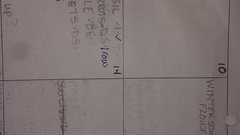
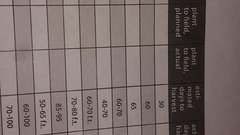
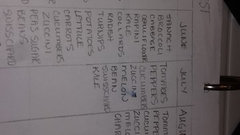

Amy here are some charts I use to help plan. My daughter says I need to put these together in an ebook and sell them but ....nah. I do not have time although planners do sell. I hope it helps or at least inspires you
The first one is my calendar I have 1 block is one week, I write in whether I am direct sowing planting inside transplanting and this year I am adding potting up
The next chart is succession planting chart I use to see what space is available when. It works well like sweet potatoes after onions worked great for me last year. The 3rd is my list of what I harvest when
And the last is the chart I printed from seeds for generations. It is helpful but for me there are several errors in timing so I am working on my own this year. Hope this helps. I have tons of charts I glean info from and of course from here to put my plan in order. I am a very systematic person.
AmyinOwasso/zone 6b
Original Author7 years agoThank you kim, I would like to work more with a calendar this year. One of my spreadsheets is like your last one, with dates to plant. It does not have days for germination, though, I might have to add that.
DH is prepping beds for onions and parsnips. He tried yesterday, but the ground was frozen solid. He's out there in shirtsleeves today and no problem with the ground. I wish it would stay like this the rest of the winter.
hazelinok
7 years agoI hope your hand is completely healed, Amy.. And yay for your husband preparing your onion/parsnip bed. It really is pretty nice out. A little windy, but I'll take it.
Thanks for sharing your charts, Lisa.
Okiedawn OK Zone 7
7 years agoAmy, You might get your wish. After this weekend's big cold spell rolls through, the 6-10 day forecast shows above-average temperatures:
Then, the monthly temperature forecasts predict above-average weather too, in fact for a very long time, which doesn't mean cold days won't pop up even there, but still....it does look promising if you want warmer than average temperatures. I don't remember the last time the monthly temperature forecasts showed such a very long stretch of temperatures likely to be above-average. Of course, these forecasts can change, but they have me dreaming of a short winter and an early spring.
Seasonal Temperature Predictions
I hope you get the full use of your broken wrist/hand back soon. It must be so frustrating to have that injury holding you back from doing the things you want to do.Dawn
AmyinOwasso/zone 6b
Original Author7 years agoThanks for the good thoughts about my wrist. I feel a little guilty, I know several people here have worse issues. A good friend of mine was just diagnosed with breast cancer. My wrist is an annoying bump in the road. Kind of gives me a funny perspective. I eat like a toddler, fingers and spoons. I had to get more pull on pants, cause buttons and zippers are out. I have an excuse not to cook, that's ok, I don't like to cook. I can't easily wash my hands without getting the brace wet. Just annoying.
It is downright hot outside! I was watering with a small watering can (with numerous trips inside to refill.) More exercise than I've been getting! I like the weather, but on the other hand, will we have drought and 100* heat early and long? Nearly everything I hoped would over winter is gone. Maybe I'll get some black plastic and warm the early beds up. I'm thinking about planting everything early, with maybe some backup plants just in case. Second guessing our weather isn't hard...just plan for EVERYTHING. I need to look into row cover.
One week and Persephone days are over at my latitude!!! Things can start growing again. Did you know leeks are not sensitive to day length and will continue to grow all winter? (Slower, of course). I tried to research other plants like that, but didn't come up with them.
I think I've gotten past my planning inertia.
nowyousedum
7 years agoPlanning! What a novel idea, lol! I really should. It seems planting time sneaks up on me every year.
AmyinOwasso/zone 6b
Original Author7 years agoMary, I got my foot tangled in a piece of twine from a straw bale and fell on my right wrist. I broke it, but instead of a cast I have a brace like you see worn for carpal tunnel. It means I have to be a little more careful than I would with a cast, but I take it off a couple of times a week and wash my arm, which is nice.
Turbo Cat (7a)
7 years agoAmy, I am so sorry to hear that. How much longer do you have to keep it braced? I am always getting my feet tangled, and I'll go knock on wood now!
AmyinOwasso/zone 6b
Original Author7 years agoI go back to the doctor the 26th. Hoping it's done by then. The straw bale was on a cart. I'd been mulching with it, the twine was under the wheel so it didn't move and I had heavy, rubberized shoes on and didn't feel the twine till it was too late. A few days later a facebook memory came up, it had been a year since I fell and broke nose. This annual falling stuff can end now!
hazelinok
7 years agoYes, Amy--no more falling!
Why is Burpee so expensive? I had a couple of things in the cart and saw the total with shipping...It was almost twice the amount of SESE and I ordered more stuff from SESE. Maybe their seed and stuff is worth it. I have to think more on this...
AmyinOwasso/zone 6b
Original Author7 years agoCheck the Burpee seed racks, they are cheaper. What are you looking for? Unless its an exclusive, we may know another source.
luvncannin
7 years agoThis year's planning sheet I color coded to make it easier. This plan will be also put onto a desk blotter and hung on the wall
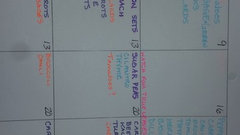
jlhart76
7 years agoMy plan: fill every container I can with dirt and seeds. whatever comes up gets planted until I run out of room. The rest goes to the spring fling, where I'll get even more and squeeze into whatever space I can find. With last year's outstanding belly flop, I'll be delighted if I get two tomatoes a week.
luvncannin
7 years agoI admit I get a little obsessed but since it is my only income I have to have a solid plan. It's a good thing I enjoy the planning part of it.
AmyinOwasso/zone 6b
Original Author7 years agoWe do what works for us, Kim. I think I'm pretty organized, but my OCD husband thinks I'm messy and disorganized. That may also be true, LOL. We just have diifferent definitions. If he doesn't touch my "stuff" I can usually lay my hands on what I'm looking for, unless I put it someplace "safe", then heaven knows where it is. At this stage of your business over organized seems like a better idea any way.
hazelinok
7 years agoBrandy Boy tomato seeds are what I'm looking for, Amy. Someone said they found them on a Home Depot rack this week. I just haven't had a chance to stop in to check. If I can't find them, I'll choose another tomato. I have everything but that seed purchased, other than onions and potatoes. And I want one more hot pepper type.
Planning is fun (for me), but it's hard to keep up with the notes and stuff. Until I'm a little more solid in gardening, I'm going to try to keep some notes. I have so many outside distractions that it's easy to forget when I plant things or where I plant things.
Turbo Cat (7a)
7 years agoAmy, I hear you on the falling. I got my feet tangled up and fell in the kitchen a few years back, and now have six screws in that ankle. At least the ankles are matching now! lol We need a warning system of some sort!
Okiedawn OK Zone 7
7 years agoLOL, so y'all need bubble wrap gardening clothing with little alarms to summon someone if you fall? I kinda like that idea! We all probably could benefit from that!
I went through a spell a few years ago where all I did was trip and fall. I was going through menopause at the time and wondered it if was related because it just came out of nowhere. I even started wondering if I was developing a neuromuscular disease or had a brain tumor or something. I can't swear that it was related to going through menopause, but after I was through menopause, I have found I fall a lot less, which makes me think it somehow was related.
Still, there's always tripping hazards in yards, gardens and such. I do always try to remember to carry my cell phone with me everywhere I go because I had a friend fall and break her pelvis while outdoors and she couldn't move at all. Her house was so remote that she laid outside for hours before someone came up their private road and found her. Luckily, it was spring and not too cold yet not too hot. Had it happened in the heat of summer or in cold winter, she might have suffered from a temperature-related illness on top of the broken pelvis.
We get fairly regular medical calls to go check on someone who has one of those LifeAlert or other similar devices because their device is sending a fall detection signal. I think those are great and they have helped many people avoid that whole scenario of lying on the floor for hours or days before they are found. If they made a GardenerAlert device to let my family know when I was (a) lying on the ground in the garden after tripping over something I stupidly left lying on the ground, or (b) was trapped inside the garden by a self-latching/locking garden gate that blew closed behind me and locked me in (I now have a wire to pull from the inside to trip the latch if that gate ever slams shut and self-locks again), I'd wear that thing every day all day. On the other hand, I might not want for anyone to know how often I still trip over a hose or drip line, trowel, shovel, uneven mulch, etc. Some secrets are best kept quiet. lol.
Seriously, though, once we reach a certain age (men and women both), tripping and falling is a serious health hazard particularly if a broken bone occurs. I think it is smart to plan and prepare for that and to have some idea of how you could summon help if you're home alone. I've had friends shocked by broken bones while still in their 50s, but it happens and not just to folks in their 80s or 90s as we all know by now. One of my friend has broken both ankles, though thankfully not at the same time, and she wasn't what I'd consider old when that happened either.
AmyinOwasso/zone 6b
Original Author7 years agoI try to remember my phone when I go in the garden. For awhile I wore an old fanny pack with phone, reading glasses and a pen and notebook. I just got a new phone. If I keep the old one charged I can use it to call 911 even though it is not active. (I've been told any cell phone will call 911, even if there is no active plan.) My folks finally got a cell phone which my mother keeps turned off because she doesn't want to pay for calls. Sigh.
luvncannin
7 years agoI usually do not carry my phone. I need to because I has so many incidents where I twisted my ankle last year and several times could not walk. Worst pain ever. But I pushed through and finally got up the hill to home. I don't like my phone to get to hot so I usually leave it in ac.
Okiedawn OK Zone 7
7 years agoAmy, Yes, every cell phone is supposed to be able to call 9-1-1 even if it is not linked to an active cell phone plan. Of course, this can cause lots of problems when folks give old cell phones to children to play with......usually after the cops visit the house a couple of times, the kids quit dialing 9-1-1 on the inactive phones.
Your mom sounds like my mom, only my mom won't even have a cell phone.
Kim, You need to carry your phone!!! If you fall and break something (like your pelvis) or you get bitten by a venomous snake or something and you lay out there in the hot or cold or heavy rain for hours, it could be deadly. Put your phone in a zip lock bag. Put the bag in a fanny pack. Put a blue ice inside a zip lock. Wrap a wash cloth around the blue ice bag to keep your phone from getting too cold and put it in the fanny pack. The blue ice pack will keep the phone from overheating. Wear it or keep it handy. I usually keep mine on my person, but at the very least in my garden tool bucket or harvest bucket, depending on what I'm doing at the time. We go on far too many medical calls where a person has laid on the floor or ground, helpless, with no way to summon help because they didn't have their cell phone with them or their Medic-Alert device on their person. Everyone always thinks it will happen to someone else and not to them.
Being overly cautious, I usually have both my cell phone and my fire radio with me, so I have two ways to call for help. You just never know what might happen on any given day---not even necessarily to you, but perhaps to someone close to where you are at that time.
It could be a that something happens to a friend. I've had that happen where someone wrecked in front of our house and I had to run about 100' to check on them, then run another 400' back to the house to call 9-1-1, then run 400' back to the scene of the wreck to check on them again, and then run 400' back to the house to call 9-1-1 again because someone got bitten by a copperhead in the middle of all that while we still were waiting for the firefighters, cops and medics to arrive. I didn't even have a cell phone then, but I got one pretty quickly after all that running back and forth to the phone, and I've learned to carry it with me at all times. If you need it and don't have it, you feel pretty stupid for forgetting to keep it with you.
Dawn
luvncannin
7 years agoDawn I will start this year. I too was on a Volunteer Fire Department as was my first husband. I was in the women's auxiliary which I really enjoyed. But the stories.....
I will also start caring a cooler with me. Last year there were several times I got too hot from not having enough to drink.
Okiedawn OK Zone 7
7 years agoGood, I am glad. Even the simplest little mishap can turn into a disaster unexpectedly.
I always carry an insulated plastic glass (64 oz.) filled with a ice and a cold drink out to the garden with me. I've gotten too hot and thirsty at times, so I do try really hard not to do that to myself. I hate to leave the garden once I'm in it, so it is better for me if I take out everything I need the first time I leave the house to go to the garden.
luvncannin
7 years agoMe too. Once I get in the garden I have to pry myself out. I got a new thermal tumbler for Christmas and it's huge. Also my little cooler full of iced water bottles will help. Now if I only had a Porta potty down there. I would never have to leave.
Okiedawn OK Zone 7
7 years agolol about the Porta potty. You could build a little outhouse, paint it really cute and solve that problem. Put a camping toilet in the outhouse and you're all set.
I think I'd just as soon go up to the house to use the indoor plumbing though. Often it is that trip into the house that makes me realize exactly how hot I am, so then I sit down inside for a few minutes and go back outside after I have cooled off. It also gives me a chance to refill my insulated tumbler. Last year we bought big silver Yeti tumblers that I think hold 32 oz. and they will keep a drink hot or cold forever. Mine usually still has unmelted ice in it long after I've finished drinking the water or iced tea that was in it when I went outdoors.
Since the west end of our garden is shaded by the pecan tree from mid-day onward, I try to put my cold drink on a chair or small patio table there which also helps keep the drink cooler longer. This also helps prevent me from misplacing my cold drink and then having to search underneath big green plants to find it. I lose everything in the garden from time to time---my glasses, drink, garden kneeling pad, keys, phone, fire radio, trowels, etc. Sometimes a day in the garden ends with a scavenger hunt to round up everything I've put down and misplaced during the day. I don't know who the forgetful woman is who sets things down in the garden and forgets where they are. Surely it can't be me.
AmyinOwasso/zone 6b
Original Author7 years agoHave I posted this picture here? This is my bucket with the spin seat and the garden boss "apron". The pockets are big enough for my insulated tumbler and the tools I'm using for the day. My other tools/supplies are in the bucket. I was known to forget my phone in a pocket...I got the garden boss thing at Ace hardware on clearance in Oct. I like my bucket so much I got another one for the house since I can't sit or kneel on the floor. Also, all my tools have fluorescent pink tape wrapped around the handles so I can find them more easily.
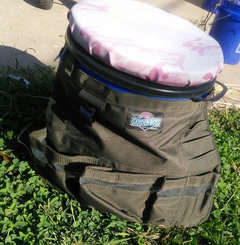
Okiedawn OK Zone 7
7 years agoI don't know if you've posted it before, but it looks nice.
My garden tool bucket doesn't have a seat on it (on purpose, because it is always crammed so full of tools that they are sticking out the top of it) and my preferred garden position for planting and weeding involves me kneeling in the pathways. Sitting upon a seat means I have to bend over more to reach the ground and my back believes the less bending the better, so kneeling works better for me while sitting on that seat works better for you. We all do whatever we have to in order to be able to keep on gardening. I wonder what further accomodations we'll have to make ten years from now?
One of our neighbors almost gave up gardening when in his late 80s. Instead, he got a folding metal chair and would place it where he wanted to work. Then, he'd sit in that chair and hoe, working his way up and down each row. It was not easy for him to get up and down and move the chair, but he was not going to give up gardening. I admired his tenacity. I remember him using the chair for only about two years and then he went into a nursing home. He didn't live long after that. I still hate the sight of his empty former garden plot. It just makes me sad to see it revert to bermuda grass. I guess the folks who live there now aren't gardeners.
As much as gardening wears me out now, I can't help wondering how I'll do it when I'm in my 80s if I am so lucky as to live that long. I don't know how my ankles, knees and back will feel about gardening 20-25 years from now. It is hard to imagine so far out in the future.
I've done the pink tape thing, but it is amazing how much all that dense green foliage can conceal anyway. It's all my fault for planting too much and for planting too closely so that the jungle swallows up anything I set down. I generally don't lose things until about June, which is when the jungle reaches a certain density. What I need is a device on the tools that will beep at me or something when I walk away and leave them lying there. Or, it could scream at me and say "pick me up". I don't care. Whatever would work. You know how they have that "find my phone" app for iphones? We need a "find my tool app" for garden tools. The lost trowel issue explains why I have 6 or 7 trowels. After I've gone about a week without finding one, I break down and buy another. (Walmart must laugh when they see me coming.) Then, in the fall or winter when cleaning up the garden, I find them all and line them up on a shelf so that I can misplace them all the following Spring or Summer.
I often clip my fire radio to a fence or tomato cage while working so it is close enough to me that I can hear it if the pager portion goes off. Then I move on after a bit and forget where I left it. Know how I find it? Either the pager goes off or I hear voices and follow the sounds to the abandoned radio. Tim is not amused when I tell him that my fire radio is in the garden but that I don't exactly know where it is, so I try extra hard not to lose it. More than once I've lost my keys, phone or radio in the compost pile....like I was filling up a bucket with plant material to take to the pile, and maybe I had one or all those items clipped onto the side of the bucket. Then, when I poured the plant material out onto the pile, the other items slipped off the bucket and fell into the compost pile. So, when one or more of those items are missing, I check the last place I worked in the garden first and then, if I've visited the compost pile that day, I check the compost pile.
I have a good garden cat named Emmitt Smith. He is about 16 years old. He loves to hang out in the garden with me. He is very smart. Sometimes when I am looking for a misplaced item, I look at him and he is sitting right beside the lost item, staring at me as if to say "it's right here". Sometimes he knows me better than I know myself, but other times he is asleep or busy eating a grasshopper or something and doesn't care if I'm looking for a lost item.
These things were never an issue when I was younger. I generally don't misplace things inside the house. It is a garden thing. I get so entranced with whatever task I'm doing that I forget everything else. It is like I can focus on gardening or I can focus on other stuff, but I cannot focus on both things at the same time.
stockergal
7 years agoOk, Dawn are you watching me??? You have described my garden days exactly!!! I am glad I am not the only one "misplacing" trowels,keys,cups, my mind!!! Haha
I love the "find my garden tool " app. Of course that would end the "early Christmas" feeling we get when cleaning up the garden and find all sorts of things.
Okiedawn OK Zone 7
7 years agoThat's true. It always is exciting to find tools and things that we thought were long lost and gone forever. I wouldn't want to mess up that early Christmas.
luvncannin
7 years agoThat reminds me I found a long lost glove I swore the dog had eaten when I was digging sweet potatoes. It was like Christmas
Okiedawn OK Zone 7
7 years agoSee there, y'all? For most people, Christmas comes but once a year. For gardeners like us who misplace things in the garden jungle, Christmas can come a lot more often when the misplaced items magically re-appear and we are reunited with them. That's just one more thing to love about gardening.
AmyinOwasso/zone 6b
Original Author7 years agoI'm now at the point where I'm working on a grow list so I can figure out when I need to start things. Trying to wrap my head around photoperiodism (day length sensitivity) at the same time, because the earlier I plant things that are effected by it, the better. I might try to warm the soil early for some things. I'll list it here, maybe it will help some one else.
beans - 4/10-4/30 OSU range, direct seed, day length neutral, but stop setting fruit at about 90*. Short DTM varieties planted as soon as it is warm enough.Cow peas - 5/1-6/10 OSU range, direct seed, short day plant, which means they would flower more after summer solstice (6/20) and aren't effected by heat like beans.
Beets - March, direct seed or start inside 2/11, one of my nemesis plants. They are a long day plant, according to one source, so should bulb in lengthening days? Yet they are also planted as a fall crop? They haven't grown for me in spring OR fall. Same source says carrots are a long day crop, and those grow better for me in fall. Both are biennial, so perhaps the long day only effects flowering and not bulbing. One source says beets grow best at 65*. I guess OK weather could be part of the problem, or lack of potassium.
Broccoli - March, start inside 2/18, Planting broccoli
Brussels sprouts - another nemesis. To grow in spring I am already behind, so fall crop
Cabbage - 2/15-3/10, start inside 2/3, I've never grown cabbage successfully either, but short DTM varieties I will try for spring. Cabbage is supposed to be day length neutral, so heat would be the enemy, that and cabbage worms.
Carrots -2/15-3/10, direct seed, I can grow carrots. Planning short DTM varieties for spring. Trying several new varieties.
Collards - 2/15-3/10, start inside 1/28, I can grow collards, too. Yellow Cabbage Collards from SESE and Georgia Collards.
I don't do corn
Cucumber - 4/10-4/30 or later, direct seed, or start inside 4/2, trying County Fair this year, probably lemon and Armenian and Diva
Greens - 2/15-3/10, start inside 3 to 4 weeks before setting out, lots of greens. Most will bolt when days get longer, like spinach.
Kale - 2/15-3/10, start inside 1/28, kale makes me feel like a super gardener. 3 new varieties to try this year.
Lettuce -2/15-3/10, start inside 1/28, this will bolt in longer days and may get bitter in heat. Trying some varieties meant to grow in warmer weather, must do better at succession planting this year
melons - 5/1-5/20, start inside 4/15 or direct seed. have not done well, trying Ha Ogen, fungicide early?
Onions - 2/15-3/10, transplants, need to find one that stores better this year
Parsnips - January-early Feb, on order - need to water consistently this year and harvest earlier (?)
Peas - 2/15-3/10, start inside 2/25, flower in longer days, but heat shuts them down. Also mildew problems, work on that before it starts
Peppers - 4/10-4/30 or later, start inside 3/1, need more growing time than tomatoes, start soon, put out later
Spinach - 2/15-3/10, start inside 2/18, bolts as days get longer (14 hours)
Swiss chard - 2/15-3/10, start inside 2/4, supposed to bolt as days get longer, doesn't always, but looks unappetizing in heat, have a dwarf short DTM to try
Squash - 4/10-4/30 or later, start inside 4/2, 3 hybrid Korean summer moschatas to try. Winter squash - 5/15-6/15, start inside 5/10, depends on space and energy level.
Tomatoes - 4/10-4/30, start inside 3/12 or much earlier
Turnips -2/15-3/10, direct seed, 2 short DTM for spring, longer DTM for fall
Gilfeather Rutabaga - trying in 2017 - 85 DTM, probably fall
AmyinOwasso/zone 6b
Original Author7 years agoI'm pretty sure cabbage has never made it in the ground at the right time. Most things that fail I have a good idea why, but beets? They just won't grow for me. Chard will, they're closely related. Not beets.
Turbo Cat (7a)
7 years agoAmy, I love your work. I had started something similar to what you and others have done, but my attention span is awful right now, and I had to go back and erase half of it because I'd put the transplant dates in the seed starting column. I don't have the software to do it on the computer, nor do I have a printer anymore, so everything has to be written by hand. I need to get myself organized, and soon!
luvncannin
7 years agoI got my basic done just need to finish succession planting and expected harvests
I would share but with mine one may "waste "a lot of seed. I start too early sometimes it pays off sometimes I lose seed. It's all an experiment until 20 years from now I pray I develop a gut instinct like Dawn.
Okiedawn OK Zone 7
7 years agolast modified: 7 years agoAmy's notes, which obviously are the result of much research and growing experience, are more oriented to when to plant, mine are more about how to grow. With anything that gives you trouble, just keep trying and eventually you'll master it. There is almost nothing that absolutely, positively will not grow here, so you just have to keep trying until you figure out what the plants need in your garden in terms of fertility, moisture and timing.
BEETS: For beets, the fact they are long-day has little to do with us gardeners other than meaning they won't set seed until the day length reaches the right point. Since we aren't growing them for the seed, this is irrelevant to getting a crop because we grow the beets for their root/tuber/whatever you want to call it and/or for beet greens. If you want to save seed, you'll probably have to sow beet seeds in the fall and let some of them overwinter in the ground. The ones that overwinter in the ground should flower and make seed once the right day length is achieved in Spring.
When you say beets won't grow for you, do you mean they don't germinate or they don't grow after germinating? Beets originated in the Mediterranean so they ought to do well here. Most folks sow the seeds too early and it rots in cold soil before it can sprout.
To get them to germinate and grow well here, wait until your soil temperatures are consistently staying at or above 50 degrees. Soak the seeds (which, like chard, are capsules containing multiple seeds within) in room-temperature water overnight. Sow 1/2-1" deep in a trench made in a raised bed, sowing seeds 1" apart. Cover with compost or soil-less mix to avoid issues caused by soil crusting over. It will take 2-3 weeks for them to sprout. Be sure to keep the seeded area moist but not dripping wet. After they sprout, you should get multiple sprouts per seed. Using tiny nail scissors or something similar, cut off all but the strongest-looking sprout from each clump. A week or so later you can do further thinning.
If they aren't growing for you after they sprout, then they may have fertility issues. They like to be fed. A lot. Or, they are too cold. Growing them under a row cover can help keep them warmer and encourage good growth. Plus, it keeps the flea beetles off of them. If you sow the seed once the soil reaches 50 degees, then by the time the seeds germinate and are growing, we ought to be warm enough for them. But, you know Oklahoma weather. After a warm winter or early spring spell, the weather can turn back cold again.
The only other thing I can think of that causes crop failures with beets is a lack of boron in the soil. You can add boron by sprinkling a small amount of Mule Team Borax (found on the laundry aisle) on the soil surface and working it in before planting. Google to find the right amount to add. I don't have to use it because my soil has boron. Too much boron is toxic, so whatever you do, don't add too much.
BEANS: The earlier you plant, the better the harvest. It always is a race to beat the heat. I like Provider and Contender because they are so fast, and Purple Queen always does well for me in Spring and Fall. Bush beans give me much better yields than pole beans most years because pole beans often are so slow the heat shuts them down before they can produce. Half-runners do really well here, but for me they climb vigorously so that they can get as tall as pole beans but produce more quickly. Pole beans do a lot better for a fall harvest than a Spring harvest in hot years. I have to keep the garden gate closed and keep the cats out of the garden after planting bean seed or they will eat every single bean sprout shortly after the seed germinates and the bean sprouts pop up above the soil.
BROCCOLI: Ridiculously easy as long as we don't get too hot too early. I now grow it under insect netting type row cover to keep the caterpillars off of it. Have found this easier than hand-picking the cats after they show up and less work than spraying with Bt.
BRUSSELS SPROUTS: Down here, BS seedlings show up in stores in mid- to late-January. If you buy them then and plant them immediately, you can get a good crop as long as the heat doesn't arrive in April like it did in 2011. Or, from seed, start the seed in mid- to late-December inside and transplant out in late January. Cover with row cover to help hold in what little heat there is in January for faster growth. Rubine is the earliest one for me, and one of the prettiest. Shade them when the heat arrives and they will produce longer.
CABBAGE: Easy to grow under row covers, low-care. I only grow varieties with 50-60 day DTMs but that is because I want the cabbage to grow and get the heck out of the way so I can plant succession crops. When I grew the ones with longer DTMs, they often weren't fully sized up until mid-June, so I just stopped growing those varieties. Very heat tolerant considering they are a cool-season crop. They normally don't bolt until we get really, really hot. If you want maximum harvest, harvest by cutting the cabbage high on the stem. Then, cut an X in the remaining stem, maybe 1/2" to 1" deep, leaving you with a main stem that is divided into 4 sections. Each section will form a new, small head that can be harvested at whatever size you choose. The small heads are tender and very good. Don't plant too much cabbage unless you can store it long-term in an extra fridge in the garage or unless you intend to make sauerkraut or freezer slaw.
CARROTS: Other than needing loose soil that won't impede growth, also easy. Hardest part is just getting them to germinate. Sowing them later than recommended works best for me. They germinate better in warm soil so the ones I sow late are up and growing fast enough to make up for the late sowing. They need moisture most in their first 6 weeks of life as that determines their ultimate length, and need moisture less as time goes on. Avoid overfertilization or you get hairy roots all over the carrots. I believe the cool weather in fall causes more sugar development inside the carrots. ANY stress the carrots encounter (heat, drought, weeds, pests, etc.) seems to hurt their flavor, so keep these garden divas happy and unstressed in order to get the tastiest crop. As long as your soil is loose and friable, you can grow any variety. In heavier clay that is not very well-amended, the shorter types do best.
COLLARDS: Easy, take up lots of space as they enlarge, and don't mind the heat as much as most people think they would. Are pest magnets, but you can use that to your advantage, planting away from other cool-season crops to draw the pests away from them.
CORN: Easy, sprout easily, grow well. Must spray plants with Bt often to control corn earworms and European corn borers. The earlier I plant and harvest, the less trouble with the caterpillar pests. Takes up lots of space, but the flavor and tenderness is worth it if you have plentiful space available. Heat causes pollination issues with sweet corn so I plant early or don't plant at all. If rural to semi-rural, you have to fight the coons for every single ear and since coons will harvest and eat your corn before it is mature enough for human consumption, you can lose the whole crop in just a couple of nights.
COWPEAS: Easiest things on earth as long as you don't sow the seeds too early. Love heat, don't mind drought and are impervious to insect damage. Often prone to having aphids if you plant them in an area with too much nitrogen or if you overfeed them.
CUCUMBERS: Easy. Grow and produce quickly. Biggest pest is cucumber beetles. To get around them as much as possible, I start some slicing cucumber seeds indoors a month early. Put them, still in paper cups, on a table in the garden to serve as a trap crop for cucumber beetles. Kill every beetle that shows up on them. By the time I am planting my actual crop, I've made a serious dent in the cucumber beetle population. County Fair is my fave because of its superior disease tolerance. I put up 100-150 jars of pickles and pickle products per year. You have to harvest pickling cukes early and often because if you let them get too big, production halts.
GREENS: Easy but short-lived in our heat. Prone to leaf miners. Row covers protect them. For greens that tolerate heat, grow Swiss Chard and Kale.
KALE: I never was much of a kale eater, but I just kept making myself eat it chopped up in salads and now I like it a lot. I grow tons of it, and grow several varieties of it. Holds exceptionally well in our heat as long as it is well-watered. Chickens adore it, so it must be well-protected from them.
LETTUCE: So easy a caveman can grow it. Perform best for me in hot weather if in morning sun/afternoon shade and if well-watered. My main Spring crop grows in full sun, but I plant some lettuce at far west end of garden to be shaded by the pecan tree as the heat arrives. Partially shaded lettuce grows more slowly and produces less, but survives longer in the heat. As long as you keep the lettuce well watered, you can prevent most of the bitterness associated with the heat until at least the end of June. I prefer leaf lettuce and crisphead/summercrisp types and Tim likes Iceberg, so I grow them all.
MELONS: True heat lovers so don't plant too early. Muskmelons slip off the vine when ripe, true cantaloupes do not. Flavor is best when grown in hot, dry weather in well-drained soil with enough, but not too much, moisture. Excess moisture waters down the flavor and ruins the texture. I trellis all of these to save space and to keep the melons up off the ground. Sow bugs and pill bugs will start eating melons touching the ground long before they are mature, often burrowing into the part of the melon that is resting on the ground so that you don't even see them and know they are there.
ONIONS: Short-day types and most intermediate day types are sweet onions, which store for a shorter period. For better storage, also grow the intermediate day or long day ones that are not sweet but instead are more pungent. They will store for a much longer period of time. I grow Red River and Highlander for storage, and in the past have grown a red type called Red Creole. All three of these store for a long, long time for me indoors after being properly cured for a few days outside. Copra also stores for a long time and sometimes Southern Bell does, but sometimes (rainier years) it does not store well at all.
PARSNIPS are persnickety and I stopped growing them long ago.
PEAS: Great producers if planted early enough. Early arrival of heat can shut them down too quickly some years. Once PM arrives, they are done and I just yank them out because it is too hard to fight it. I take PM as a sign from God that it is time to move on from the peas and plant a succession crop of something else. I only grow sugar snap types, as shelling peas produce such a small amount of yield compared to the space they occupy.
PEPPERS: Hots produce early and often for me. Sweets are slower. I harvest the early sweet peppers green in order to get them out of the way so the plant can set more peppers before the summer heat sets in. I let later fruit stay on the plants until they reach their full mature color, which is red, yellow or orange for most of the sweet types I grow. Peppers will wear you out with their productivity but are easy to preserve via drying, canning and freezing.
SPINACH: Barely worth growing in Spring as the heat shuts it down so early, but does much better in fall/winter. If you get the plants large enough before daylength falls too much in the autumn, you can leave these in the ground (preferably under a row cover and well-protected from chickens, and harvest throughout the winter.
SWISS CHARD: produces all summer as long as you continually harvest the outer leaves before they get too big. I like to grow it at the west end of the garden for afternoon shade in the summer months. Doesn't bolt all that easily. I've had chard go 18 months before it bolts. I like chard and use it a lot, especially as a part of veggie soup where Tim and Chris (who don't like it) will eat it without realizing they're eating it. Chickens like it, but not as much as they like kale.
SQUASH: Discussed here all summer long because of its pest issues. Row covers, row covers, row covers for anything that is not C. moschata.
TOMATOES: I plant early like the tomato maniac that I am and use row covers to protect the plants from cold weather. I'd rather be doing all my tomato canning in June and earliest July than in July and August in the heat. Very easy to grow, but often will not produce much of a crop if transplanted when OSU recommends or later, so we get caught between a rock and a hard place because of the heat which often arrives not too long after the end of the OSU-recommended transplanting period. I transplant as soon as my soil temperature is staying at or above 50 degrees consistently, which generally is in early March down here. Y'all know I'm not happy unless we are harvesting tomatoes in April, and the harvest generally extends through late November.
TURNIPS/RUTABAGAS: Easy from seed in spring or fall. Most people let them grow too long/get too big and they turn woody. I like them small, tender and sweet.
WATERMELONS: I grow the tiny icebox melons (tiny compared to full-sized watermelons) on trellises and get so many at once that we end up sharing them with the chickens. They are very easy and surprisingly pest-free when trellised and relatively disease free most years. Yummy, yummy, yummy. The varieties that have produced best for me are Yellow Doll, Yellow Baby, Sugar Baby, Bush Sugar Baby, New Orchid and Tiny Baby. Last year I grew the even tinier Sugar Pot and will grow it again this year.
Mary, How about keeping your notes on those large index card, one card per veggie. That's an easy way to keep track of the info for each separate thing, and then you can just keep lists of what planting dates work best for you there.
Turbo Cat (7a)
7 years agolast modified: 7 years agoThat's a good idea, Dawn. I may try that. I've got a list going for a few garden supplies, anyway. If I can find the list. lol I need to drive over to Owasso, to Home Depot, because they carry certain items that Lowe's here doesn't carry. One of those items is pine bark mulch, because I understand that they carry a brand that I can use instead of fines. Theirs is described as dust to 3/8 inch, and I can't locate fines here. I just haven't felt up to going over there, and these aren't things I need right this second, anyway. I do need to get some more seed starting mix, because I don't feel like going out to the shed and opening that big bag of peat to make my own. It's too wet/cool to work with it on the patio today, and I'm not dragging that peat bale in the house.
The hardest part right now is NOT starting things too early. I did start a few pepper seeds, but not too many. Last year I started them the same time as my tomato seeds, which was on Feb 8th, and the peppers were a fine size when I put them in the garden. I didn't plant my peppers until a couple weeks (mid April or so) after the tomatoes. My tomato seedlings had really gotten too big, I think. At 8 weeks, they'd been hardening off outside for at least 3 weeks (they were too big and crowded under the lights), and were 15 inches tall and flowering when I got them in the ground the first week of April. I was dragging them into the garage at night, outside on the driveway during the day. I had to pick flowers off of all of them. I'd rather they be a little shorter this time, so I don't have to lay them all cattywampus or dig a hole all the way to China! lol I grew WAY TOO MANY plants last year, too. I think I grew 150 tomato plants??? I gave so many plants away to neighbors, folks that work on my lawn equipment, in-laws, out-laws, anybody and everybody who wanted some. Some even went to a couple of gardeners in Muskogee. Some, sadly, just got thrown out.
Anyway, I'm trying to restrain myself this time around. Less is probably better, and then I have room to play with some other stuff under the lights. I was just excited last year, having set up my light shelf, etc. Course, I'm still excited this year, too! All the tomato seeds that will go into the grow-bags are popping up, and now they are under the lights. Those grow bags are HUGE. They will require a lot of soil-less mix, that's for sure. Peppers are on my 20 year old heating pad/seed germinator. lol I had germinated a couple of my saved Brandy Boy seeds, and they are growing like weeds. I can't wait to see if they turn out potato-leafed. If they do, then I will grow out some others. I've got some herbs under lights, and still waiting on parsley to come up. It seems to take forever. I've got to get some of the cold season stuff started in the next few days. My big need right now is to hire someone to come and help me get the garden ready for planting. It's in a horrible mess right now, and if I don't get THAT done, then no amount of seed starting will do me any good! :)
AmyinOwasso/zone 6b
Original Author7 years agoThank you Dawn, a lot of good info there! I get spotty germination with beets. Last fall I direct seeded a few which germinated poorly, started some inside (with maybe 70% germination). They get a few smallish leaves and quit, stop growing. Then, of course, they are vulnerable to over zealous weeding by spouses and escaped chickens. I have wondered about boron. I will see about enriching the soil more before planting.
We're thinking about going to Carmichael's in Bixby this weekend for onions, and potatoes if they have them. In the past they've had the best variety I've seen. I only have room for 2 bunches, so I don't order direct from Dixondale, but that is what Carmichaels has had in the past.
Mary, I use Google Sheets on my tablet. It is a free app for my tablet, but it can be used in a browser on a desk top, also free.
Okiedawn OK Zone 7
7 years agoMary, I agree that the hardest thing is not starting too early. It always seems backwards to me that I start certain warm-season seeds indoors (tomatoes, peppers, artichokes) indoors before I start cool-season seeds indoors, but the warm-season seedlings take longer to grow to transplant size. It is what it is, I guess. People on Facebook on the Oklahoma gardening pages are chomping at the bit (mostly lesser experienced gardeners) to sow seeds in the ground, and the more experienced gardeners are cautioning them not to. The truth is, once a person is just dying to plant something, I feel like they probably are going to go ahead and do it anyway most times. Once that train leaves the station, you can't slow anyone down.
Amy, It seems to me like it has to be boron because nothing else makes much sense, but that's just a guess. I added boron our first year here with Mule Team Borox and haven't had to do it since then. However, if you can grow broccoli and other brassicas in the same soil as the beets and they don't show symptoms of boron deficiency, then I find it hard to imagine there's not enough boron for beets.
I haven't done much stocking up on stuff, other then ordering the seeds I needed and buying seed potatoes. Oh, and every weekend when we're in Wal-Mart, I buy a bag of Tomato-Tone, knowing that by the time I actually need Tomato-Tone it will be sold out. I just buy a bag a week until they run out and stockpile it for the summer months. Even then, I run out of it at some point in time, but by then the tomato plants already probably have set all the fruit they're going to...but that's a heat problem that is unavoidable.
Dawn
AmyinOwasso/zone 6b
Original Author7 years agoMost of my soil came in via truck, LOL, and came from different sources, so it's hard to decide where to take a soil sample. It was strange though, I planted Bull's Blood beets in my "purple bed" last fall. Kale did well, pac choi did well, even the Brussels sprouts looked pretty good, the beets just kind of laid down and drooped regardless of water or weather. It's possible they didn't get enough Garden Tone, but I started them in 2 other beds with similar results. My brassica failures are linked to timing and pests. I don't remember any of the symptoms of boron deficiency. Of course, if they weren't getting the right nutrients it might have attracted pests.
Mary, there's a learning curve if you're used to excel. I have now forgotten everything I knew about excel, LOL.

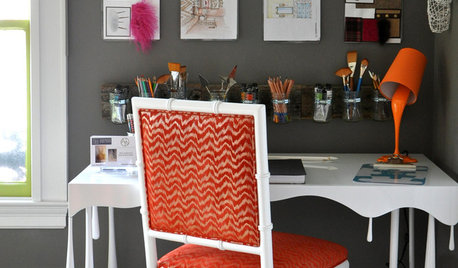


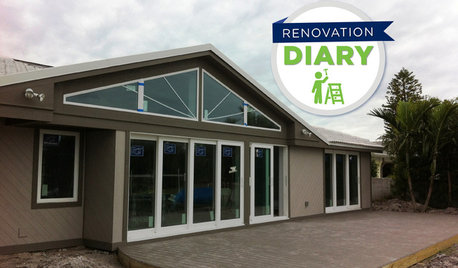


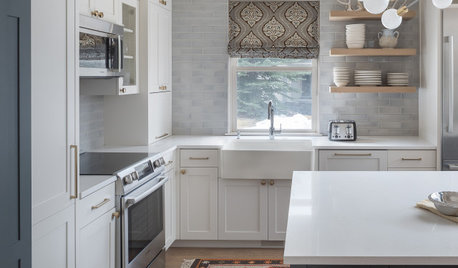
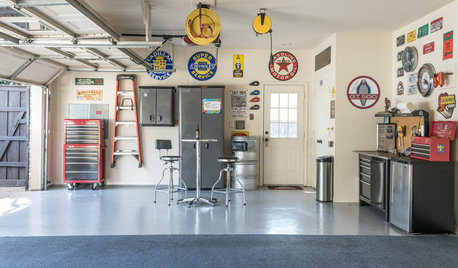
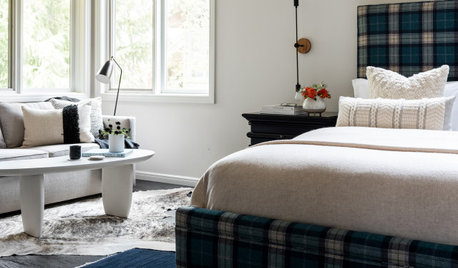



chickencoupe